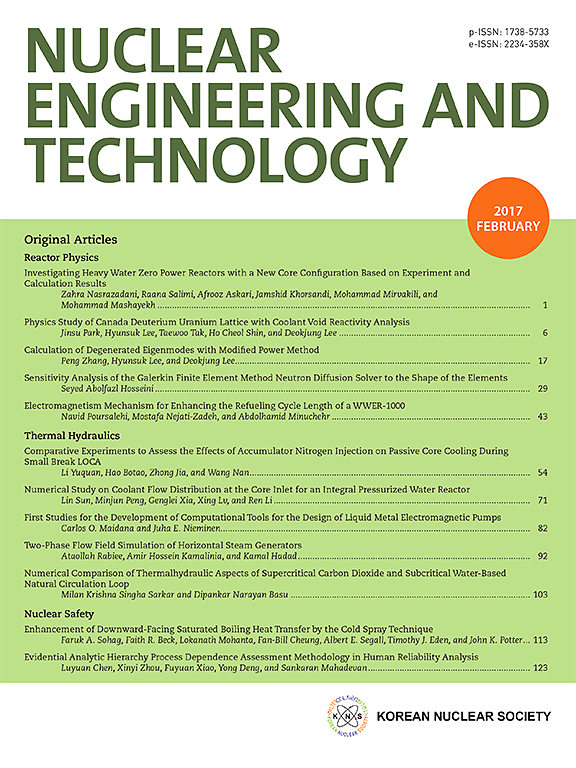Electrokinetic in situ leaching of U from low-permeability uranium ore
IF 2.6
3区 工程技术
Q1 NUCLEAR SCIENCE & TECHNOLOGY
引用次数: 0
Abstract
In this study, the impacts of electrokinetic in situ leaching of uranium (EK-ISLU) on the pore structure and connectivity of the low-permeability uranium ore and its leaching efficiency were investigated. Our results demonstrated that a direct current field with an intensity of 7.5 V/cm increased the porosity by 7.07 % and enhanced the uranium leaching efficiency by 73.73 % using a sulfuric acid solution. Under electrical stimulation, the leaching agent exhibited uniform penetration ability through combined electromigration and electroosmosis effects, significantly improving the directed migration of the target ions. Various characterization techniques, such as Fourier transform infrared (FTIR) spectroscopy, scanning electron microscopy-energy dispersive X-ray spectrometry (SEM-EDS), three-dimensional computed tomography (CT) pore scanning and Brunauer-Emmett-Teller (BET), showed that the electrokinetic-induced action overcame the preferential flow phenomena, promoted the dissolution of the target minerals and gangue rocks, and notably improved the pore structure to ultimately enhance the uranium leaching efficiency. Our results provide valuable insights for the development of innovative technologies aimed at efficiently recovering U from low-permeability uranium ores.
求助全文
约1分钟内获得全文
求助全文
来源期刊

Nuclear Engineering and Technology
工程技术-核科学技术
CiteScore
4.80
自引率
7.40%
发文量
431
审稿时长
3.5 months
期刊介绍:
Nuclear Engineering and Technology (NET), an international journal of the Korean Nuclear Society (KNS), publishes peer-reviewed papers on original research, ideas and developments in all areas of the field of nuclear science and technology. NET bimonthly publishes original articles, reviews, and technical notes. The journal is listed in the Science Citation Index Expanded (SCIE) of Thomson Reuters.
NET covers all fields for peaceful utilization of nuclear energy and radiation as follows:
1) Reactor Physics
2) Thermal Hydraulics
3) Nuclear Safety
4) Nuclear I&C
5) Nuclear Physics, Fusion, and Laser Technology
6) Nuclear Fuel Cycle and Radioactive Waste Management
7) Nuclear Fuel and Reactor Materials
8) Radiation Application
9) Radiation Protection
10) Nuclear Structural Analysis and Plant Management & Maintenance
11) Nuclear Policy, Economics, and Human Resource Development
 求助内容:
求助内容: 应助结果提醒方式:
应助结果提醒方式:


